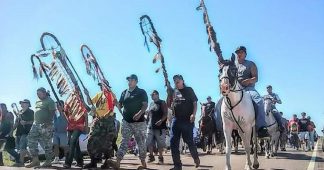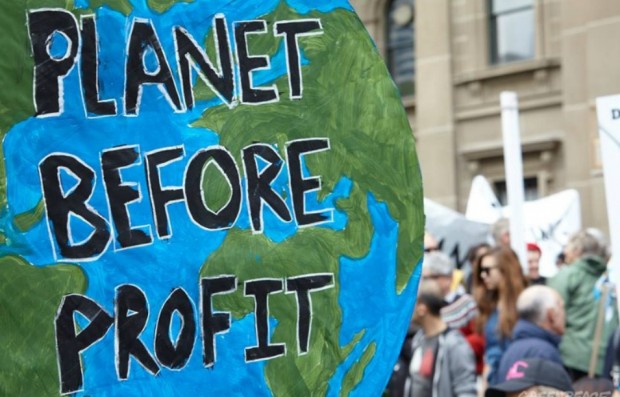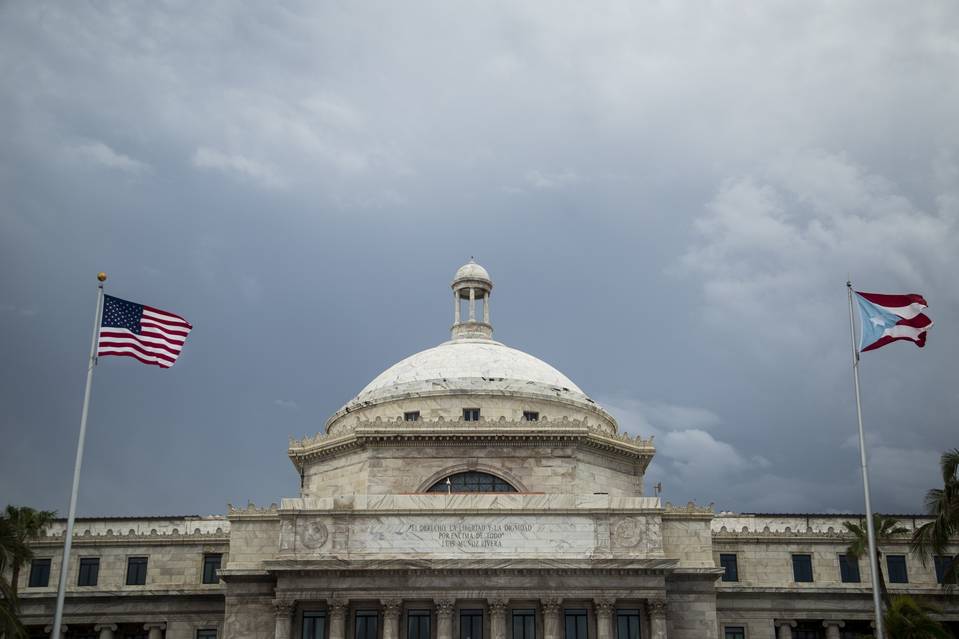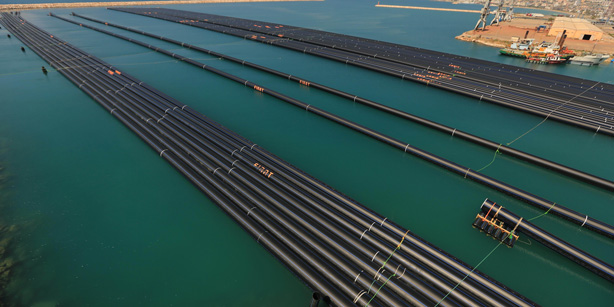By Alejandro Dávila Fragoso
WASHINGTON D.C — A federal court said on Wednesday it will rule next month whether to temporarily halt construction of a controversial oil pipeline that has prompted large protests in North Dakota.
After more than an hour-long hearing, Judge James E. Boasberg said he’ll decide as early as Sept. 9 on the injunction request the Standing Rock Sioux Tribe filed against the so-called Bakken pipeline, a massive fracked oil line that would cut through four Midwestern states and hundreds of waterways.
“We are pleased that we had our day in court today, and we look forward to a ruling soon,” said Standing Rock Sioux Tribal Chairman Dave Archaumbault II. “I believe that everyone who attended the hearing today will understand that the tribe is seeking fundamental justice here.”
Native Americans say the pipeline threatens sacred sites and drinking water resources, and that no meaningful consultation took place. The Army Corps of Engineers disagrees. During the court hearing, the agency said the tribe declined to be part of the process. The tribe in turn said they didn’t want to legitimize a flawed process. The company building the pipeline, Dakota Access, says the project is safe and will benefit the region and boost energy independence. They have, however, agreed to stop construction in that area of North Dakota until the court rules on the injunction.
The hearing in D.C. comes about a month after the Standing Rock Sioux Tribe sued the Corps over the permits the Corps gave to the developer, Dakota Access, to build on an area roughly half-mile north of the reservation, and through the Missouri River — as well as other federal waterways.
or months tribe members have protested one of the construction sites located near where the Cannonball and Missouri rivers meet. At first these gatherings were reportedly small “spirit camp” protests where tribe members prayed. But this month protests escalated in size and intensity as construction crews moved in, garnishing the attention of celebrities, and national and international media.
The state and county governments have escalated their response. Nearly 30 people have been arrested in the past two weeks, according to Amnesty International, which said Wednesday it sent a delegation of human rights observers, and a letter to law enforcement authorities outlining how safety agencies are required to act in accordance with international human rights standards.
Earlier this week North Dakota Homeland Security Director Greg Wilz ordered the removal of state-owned trailers, including two air-conditioned trailers and water tanks from the protest encampment, in response to alleged disorderly conduct, the Bismarck Tribune reported Monday. Tribe members had requested and been given mobile public health services like water to ensure the safety of the protesters as summer temperatures can climb to 80 degrees or more.
And late last week, Gov. Jack Dalrymple (R-ND) issued an emergency declaration for southwest and south-central North Dakota as recent events have created a “significant public safety concern.” Tribes maintain the protests have been peaceful.
The Bakken pipeline is roughly 48 percent complete, officials said during the court hearing, and the line is scheduled to start delivering oil in January. Construction is ongoing almost everywhere else, though a small group of Iowa landowners managed to get a construction reprieve from state regulators Wednesday.
As the court hearing went on indoors in D.C., outside scores of mostly Native Americans from as far away as Arizona gathered in a packed rally that continued even after the hearing was over. Actresses Susan Sarandon and Shailene Woodley were part of the protest. Woodley, who has been protesting in North Dakota, is one of many celebrities that have over the past few months called along Native Americans for a halt to construction and a repeal of pipeline permits.
Comparable in size to the more-famous (but rejected) Keystone XL, the Bakken pipeline is slated to be the largest oil line coming out of North Dakota’s Bakken oil fields, among the nation’s most active due to the fracking boom. The line would move up to 570,000 barrels of sweet crude oil daily through the Dakotas, Iowa, and Illinois.
The nearly $3.8 billion pipeline is slated to cross multiple watersheds in its more than 1,150 mile course. Aside from the alleged threat to sacred sites, critics say the pipeline brings the threat of spill damage to thousands of miles of fertile farmland, forests, and rivers. Federal agencies have said the Bakken Pipeline avoids “critical habitat.”
Most of the affected land is farmland, but the project does run through wildlife areas and major waterways like the Mississippi, and the Missouri, the longest river in North America.
The company has said in permitting documents it will have personnel all along the pipeline for operation and maintenance, use a 24-hour monitoring system that can detect small pressure changes, and ensure shut-off valves that can be remotely activated if a leak happens.
It furthermore contends that the project will create nearly 12,000 jobs and open up rail capacity for crops and other commodities. Otherwise, the company said in documents, some 750 rail cars would be required to depart the tank terminal daily to fulfill its projected production. That would represent a 50 to 60 percent increase in the number of trains transporting crude oil out of the state, according to Dakota Access.
As the federal court decision looms, protests in North Dakota are likely to continue. Though figures fluctuate, tribe officials say that as many as 4,000 people have reached the area, and that tribal flags from as far away as California can be seen flying, showing that support extends beyond Great Plains tribes.
The company has said in permitting documents it will have personnel all along the pipeline for operation and maintenance, use a 24-hour monitoring system that can detect small pressure changes, and ensure shut-off valves that can be remotely activated if a leak happens.
It furthermore contends that the project will create nearly 12,000 jobs and open up rail capacity for crops and other commodities. Otherwise, the company said in documents, some 750 rail cars would be required to depart the tank terminal daily to fulfill its projected production. That would represent a 50 to 60 percent increase in the number of trains transporting crude oil out of the state, according to Dakota Access.
As the federal court decision looms, protests in North Dakota are likely to continue. Though figures fluctuate, tribe officials say that as many as 4,000 people have reached the area, and that tribal flags from as far away as California can be seen flying, showing that support extends beyond Great Plains tribes.











